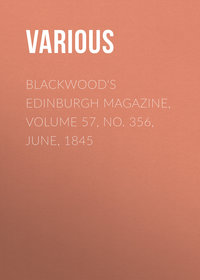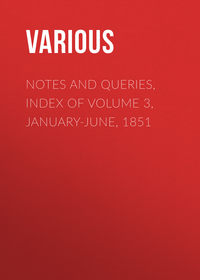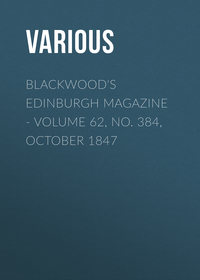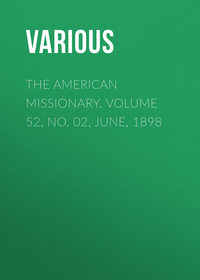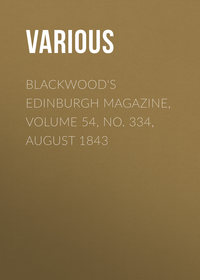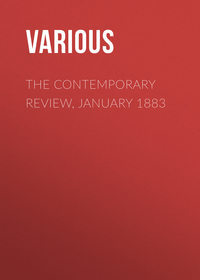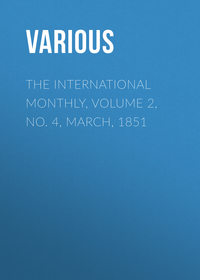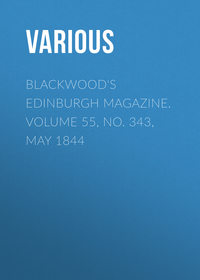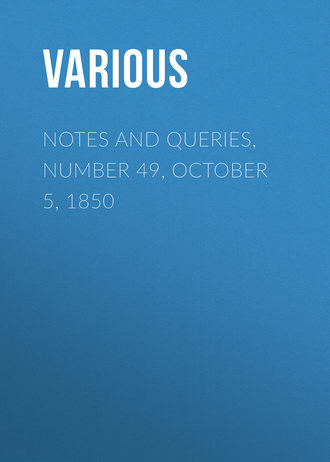 полная версия
полная версияNotes and Queries, Number 49, October 5, 1850
Junnius and Sir Philip Francis.—A few years ago, an aged intelligent person named Garner was living at Belgrave, near Leicester. I have heard him say that, when he was a farm bailiff to Lord Thanet, at Sevenoaks, in Kent, Sir Philip Francis was a frequent visitor there, and had a private room set apart for literary occupation. On one occasion, when he (Mr. Garner) was riding over the farm with Sir Philip Francis, the former alluded to one of the replies to Junius, by a clergyman who had been the subject of the "Great Unknown's" anonymous attacks, adding, "They say, Sir Philip, you are Junius." Sir Philip did not deny that he was the man, but simply smiled at the remark. This, and other circumstances coupled with the fact of Sir Philip's frequent visits to the house of so noted a politician as Lord Thanet, rendered Mr. Garner a firm believer in the identity of Sir Philip and Junius to the end of his days.
JAYTEE.Jews under the Commonwealth (Vol. i., pp. 401. 474.; vol ii., p. 25.).—There is a confirmation of the story of the Jews being in treaty for St. Paul's and the Oxford Library in a passage in Carte's Letters, i. 276, April 2, 1649:—
"They are about demolishing and selling cathedral churches. I hear Norwich is designed already, and that the Jews proffer 600,000l. for Paul's and Oxford Library, and may have them for 200,000l. more."
CH."Is anything but," &c.—As your work seems adapted, amongst other subjects, to check the introduction into our language of undesirable words, phrases, and forms of speech, I would call the attention of your readers to the modern phrases, "is anything but," and the like, which have lately crept into use, and will be found, in many (otherwise) well-written books.
I read the phrase "is anything but," for the first time, in Napier's Peninsular War; where it struck me as being so much beneath the dignity of historical composition, and at the same time asserting an impossibility, that I meditated calling the author's attention to it. The not unfrequent use of the same phrase by other writers, since that time, has by no means reconciled me to its use.
In the Edinburgh Review for January last (1850) I find the following sentence:—"But as pains have been taken to fix the blame upon any one except the parties culpable;" and in the July number of the same Review (p. 90.) occurs the sentence, "any impulse rather than that of patriotism," &c.
Now, a "thing," or "person," or "impulse,"—though it may not be the "thing," or "person," or "impulse" charged as the agent,—must yet be some certain and specific thing, or party, or impulse, if existing as an agent at all in the matter; and cannot be "any thing," or "any party," or "any impulse," in the indefinite sense intended in these phrases. Moreover, there seems no difficulty in expressing, in a simple and direct manner, that the agent was a very different, or opposite, or dissimilar "thing," or "person," or "impulse" from that supposed.
I wish some persons of competent authority in the science of our language (and many such there are who write in your pages) would take up this subject, with a view to preserve the purity of it; and would also, for the future, exercise a watchful vigilance over the use, for the first time, of any incorrect, or low words or phrases, in composition; and so endeavour to confine them to the vulgar, or to those who ape the vulgar in their style.
P.H.F.Fastitocalon.—Fastitocalon. Cod. Exon. fol. 96. b. p. 360. 18. read [Greek: Aspido … chelonae]. Tychsen, Physiologus Syrus, cap. xxx.: did the digamma get to Crediton by way of Cricklade?
F.Q.QUERIES
BISHOP COSIN'S CONFERENCE
Basire in his Dead Man's Real Speech (pp. 59, 60.), amongst other "notable instances" of Bishop Cosin's zeal and constancy in defence of the Church of England, mentions
"A solemn conference both by word and writing betwixt him and the Prior of the English Benedictines at Paris, supposed to be Robinson. The argument was concerning the validity of the ordination of our priests, &c., in the Church of England. The issue was, our Doctor had the better so far, that he could never get from the Prior any reply to his last answer. This conference was undertaken to fix a person of honour then wavering about that point; the sum of which conference (as I am informed), was written by Dr. Cosin to Dr. Morley, the now Right Reverend Lord Bishop of Winchester, in two letters bearing date June 11, July 11, 1645."
The substance of this conference has been preserved among the Smith Manuscripts in the Bodleian Library; but it is not in the form of letters to Dr. Morley. Vol. xl. of this valuable collection of manuscripts contains (as described in Smith's table of contents):—
1. "Papers of Bp. Cosins in defence of the Ordination of the Church of England against father Prior.
"The first of these is Bp. Cosin's Review of the Father's Letter, &c. [the title-page is placed at p. 77.]
"Then follows a letter (which is indeed the Bishop's first paper, and should be put first) from Bishop Cosin to the Father.
"After that the Father's Answer to Bishop Cosin's Review at p. 81.
"Then come two other papers about the validity of our Ordination, with a preface concerning the occasion, p. 89."
2. "Then, p. 101., A Letter from a Rom. Cath. to a Lady about communicating in one kind,—with Bishop Cosin's Answer."
3. "Lastly, in p. 123., is A Letter of Bp. Cosin's to Dr. Collins concerning the Sabbath."
The order in which the papers under the first head, about our English ordination, should fall, appears to be as follows:—
1. There is a note attached to p. 65., evidently written by Dr. Tho. Smith himself in the following words:
"Transcript of several papers of Bishop Cosin's sent to me by Dr. J. Smith, Prebendary of Durham.—T.S."
2. At p. 77. the title-page is given thus:
"A Review of a Letter sent from F.P.R. to a Lady (whom he would have persuaded to the Rom. party) in Opposition to a former paper given him for the defence of the Church of England in the Ordination of Priests."
To this are appended the respective forms of ordering priests used in the Church of England and in the Roman Church.
3. Then, at p. 89., we have the "occasion of this … Discourse concerning the Ordination of Priests," &c. This is a kind of preface, which contains the first paper that was given to the Prior, dated June 14, 1645; also another paper, bearing date July 11, 1645, but ending abruptly in the middle of a sentence, and having written below it (probably in Dr. J. Smith's hand) the following note:
"The rest of this is not yet found, and that which is written thus far is not in the Bishop's own hand, but the copy is very fair."
However, this second paper (ending thus abruptly) appears to be no more than the first draft of a long letter from Cosin to the Prior, which commences at p. 65. of this MS., and which is dated "from the Court of S. Germains, July 11, 1645;" for not only does this letter bear the same date as the before-mentioned fragment, but it begins by complaining of the tone of expression in a letter evidently received from the Prior after the draft had been prepared, but before it was sent off; and it concludes with the following note appended as a postscript:
"Sir,
"The enclosed (most of it) was prepared for you a fortnight since; but now (upon the occasion given by your letter) you have it with some advantage from
"Your servt., J.C.
"I desire the fav"
"S. Germ. July 12."
4. The most important part of this MS., however, is contained in the long letter or treatise placed first in the volume, and bearing for its title, "A View of F.P.'s Answer to the First Paper."
This is dated from S. Germains, July 25, 1645 and would appear to be Cosin's last letter. But, if it be really so, Basire must, I think, be in error, when he says, "Our Doctor … could never get from the Prior any reply to his last answer." For at p. 81. of the MS. there is a reply to the above "Review of a Letter sent by F.R. to a Lady," &c. which, though copied without either date or signature, was evidently written by the Prior, whilst it professes to be a reply to a treatise closely answering to Cosin's letter of July 25, but which letter the writer did not receive (as he states) before the 26th of September.
I wish yet further to take notice, that Dr. Tho. Smith, in His Vitæ (Lond. 1707, præf. pp. vii, viii.), refers to these manuscripts in the following satisfactory manner:—
"Cum, post mortem D. Cosini, de pretio et valore schedarum, quas reliquit, hæredibus non satis constaret, … auspieatò tandem devenit, ut favore, beneficio, et perquam insigni humanitate reverendi et doctissimi viri, D. Joannis Smith, Sacræ Theologiæ Professoris Ecclesiæ Dunelmensis Præbendarii, quorum frequens hac de re commercium literarum, occasione data, (opportunè intercedente prænobili et reverendo, D. Georgio Whelero, equite aurato, et Ecclesiæ Anglicanæ Presbytero, ejusdem quoque Ecclesiæ Cathedralis Prebendario), habui, duos libellos (tanquam prætiosas tabulas ab isthoc infami naufragio servatas) a D. Cosino, dum in Galliâ exularet, Anglieè conscriptos jam possidieam: quarum unus Vindicias Ordinatianum Ecclesieæ Anglicanæ contra exceptiones et cavillationes cujusdem Pontificii sacerdotis e gente nostra, alter Responsionem ad Epistolam nobili fæminæ Anglæ ab alio saccrdote pro defensione communionis sub unicâ specie administrandæ inscriptam, complectitur," &c.
I should still be glad to add to this long note the followng Queries:—
1. Can any of your readers kindly inform me whether Cosin's two letters to Dr. Geo. Morley are still in existence, either in MS. or in print?
2. Whether there be any fuller or more authentic account of the controversy than that in these MS. preserved by the care of Dr. Smith?
3. Whether Cosin wrote any letter to the Prior later than that of July 25?
4. Who was the lady the Prior wished to seduce to the Roman party?
5. Is there any other account of the controversy?
J. SANSOM.ENGELMAN'S BIBILIOTHECA SCRIPTORUM CLASSICORUM
A little while ago, I ordered Engelman's Bibliotheca Scriptoram Classicorum, purporting to contain all such works published from 1700 to 1846. It was furnished to my bookseller by a foreign bookseller in London with an English title, having his own name on it as publisher, and an invitation to purchase the books described in it from him. As the paper and type were German, I objected and received in consequence a new English title, with the same name upon it, and a shorter invitation to purchase from him. I was captious enough to object even to this; and I then received a Leipzig title in German. But there still remains a difficulty: for this German title has also the name of a Parisian bookseller upon it, a la maison duquel on peut s'adresser, &c. Now, as Engelman is a bookseller, and would probably not object to an order out of his own catalogue, of which he is both author and publisher, the preceding, circumstances naturally raise the following Queries:
1. What is the real title-page of Engelman's Catalogue 2. Is the Parisian house accredited by Engelman; or has the former served the latter as the London house has Served both? 3. Is it not desirable that literary men should set their faces very decidedly against all and every the slightest alteration in the genuine description of a book? 4. Would it not be desirable that every such alteration should forthwith be communicate to your paper?
The English title-page omits the important fact, that the Catalogue begins at 1700, and describes it as containing all editions, &c., up to 1846.
A. DE MORGAN.September 24. 1850.
MINOR QUERIES
Portrait of Sir P. Sidney, by Paul Veronese.—In the letters of Sir P. Sidney which I found at Hamburg, and which were published by Pickering, 1845, it is stated that a portrait of Sidney was painted by Paul Veronese, at Venice, for Herbert Languet. It would be very interesting to discover the existence of this picture.
Languet had it with him at Prague, framed, as he asserts, and hung up in his room, in the year 1575. He remarks upon it, in one place, that it represented Sidney as too young (he was nineteen when it was taken); in another place he says that it has given him too sad an expression. I should add, that on Languet's death, his property passed into the hands of his friend Du Plessis.
I am led to write to you on this subject, by having observed, a few days since, in the collection at Blenheim, two portraits by Paul Veronese, of persons unknown. There may be many such, and that of Sir Philip Sidney may yet be identified.
STEUART A. PEARS.Harrow, Sept. 6.
Confession.—You would much oblige if you could discover the name of a Catholic priest, in German history, who submitted to die rather than reveal a secret committed to him in confession?
U.J.B.Scotch Prisoners at Worcester.—In Mr. Walcott's History of St. Margaret's Church, Westminster, I find the following extract from church wardens' accounts:—
"1652. P'd to Thos. Wright for 67 loads of soyle laid on the graves in Tothill Fields, wherein 1200 Scotch prisoners, taken at the fight at Worcester, were buried; and for other pains taken with his teeme of horses, about mending the Sanctuary Highway, when Gen. Ireton was buried."
I have taken the pains to verify this extract, and find the figures quite correctly given. I wish to put the Query: Is this abominable massacre in cold blood mentioned by any of our historians? But for such unexceptionable evidence, it would appear incredible.
C.F.S.Adamson's Reign of Edward II.—
"The Reigns of King Edward II., and so far of King Edward III., as relates to the Lives and Actions of Piers Gaveston, Hugh de Spencer, and Roger Lord Mortimer, with Remarks thereon adapted to the present Time: Humbly addressed to all his Majesty's Subjects of Great Britain, &c., by J. Adamson. Printed for J. Millar, near the Horse Guards, 1732, and sold by the Booksellers of London and Westminster, price One Shilling."
The above is the title-page of a little work of eighty-six pages in my possession, which I am inclined to think is scarce. It appears to be a defence of the Walpole administration from the attacks of the Craftsman, a periodical of the time, conducted by Amhurst, who was supported by Bolinbroke and Pulteney, the leaders of the opposition. Is anything known of J. Adamson, the author?
H.A.E.Sir Thomas Moore.—Can any of your readers give any account of Sir Thomas Moore, beyond what Victor tells of him in his History of the Theatre, ii. p. 144., "that he was the author of an absurd tragedy called Mangora (played in 1717), and was knighted by George I."
In Pope's "Epistle to Arbuthnot," he writes—
"Arthur, whose giddy son leglects the laws."on which Warburton notes—
"Arthur Moore, Esq."Who was Arthur Moore, Esq.? and who was the "giddy son?" Was the latter James Moore Smith a gentleman whose family name was, I think, Moore, and who assumed (perhaps for a fortune) the additional name of Smith? This gentleman Pope seems to call indiscriminately Moore, Moor, and More: and when he says that his good nature towards the dunces was so great that he had even "rhymed for Moor" (Ib. v. 373.), I cannot but suspect that the Moor for whom he had rhymed, was the giddy son whom Arthur accused him of seducing from the law to the Muses. There are many allusions to this Mr. James Moore Smith throughout Pope's satirical works, but all very obscure; and Warburton, though he appears to have known him, affords no explanation as to who or what he was. He was the author of a comedy called The Rival Modes.
C.Dr. E. Cleaver, Bishop of Cork.—I shall feel much obliged to any of your correspondents who will furnish me with the particulars of the consecration of Dr. Euseby Cleaver to the sees of Cork and Ross, in March, April, or May, 1789. Finding no record of the transaction in the Diocesan Registry of Cork, and not being able to trace it in any other part of Ireland, I am induced to believe that this consecration may have taken place in England; and shall be very glad to be correctly informed upon the point.
H. COTTON.Thurles, Ireland.
Gwynn's London and Westminster.—Mr. Thomas Frederick Hunt, in his Exemplars of Tudor Architecture, 4to. London, 1830, in a note at p. 23., alludes to London and Westminster improved, by John Gywnn, London, 1766, 4to., and has this remark:
"It is a singular fact, that in this work John Gwynn pointed out almost all the designs for the improvement of London, which have been devised by the civil and military architects of the present day."
And Mr. Hunt concludes by observing,, that—
"This discovery was made by the Literary Gazette."
Will you permit me, through the medium of your useful publication, to solicit information of the number and date of the Literary Gazette which recalled public attention to this very remarkable fact?
§N.Coronet.—In Newbold Church, in the county of Warwick, is a monument to the memory of Thomas Boughton of Lawford, and Elizabeth his wife, representing him in a suit of armour, with sword and spurs, a coronet on his head, and a bear at his feet, chained and muzzled. Query.—Can any of your readers give an accurate description of this coronet? Or can any of them mention instances of the monuments of esquires having similar coronets? The date of his death is not given: his wife died in the year 1454.
Z.Cinderella.—Referring to Vol. ii., p. 214., allow me to ask in what edition of Perrault's Fairy Tales the misprint of verre from vair first occurs? what is the date of their first publication, as well as that of the translation under the title of Mother Goose's Tales? whether Perrault was the originator of Cinderella, or from what source he drew the tale? what, moreover, is the authority for identifying sable with vair for the employment of either in designating the highest rank of princesses?
SANDVICENSIS.Judas' Bell, Judas' Candle (Vol. i., pp. 195. 235. 357.).—Some time since I asked the meaning of a Judas' Bell, and your learned correspondent CEPHAS replied that it was only a bell so christened after St. Jude, the apostle. However, it may have been connected with the Judas' tapers, which, according, to the subjoined entries, were used with the Paschal candle at Easter. May I trust to his kindness to explain its purport?
"Reading Parish Accompts.
"1499. Itm. payed for making leng' Mr. Smyth's molde wt. a Judas for the Pascall—vJd."
"St. Giles' Parish Accompts.
"A.D. 1514. Paid for making a Judas for Pascall iiijd."
"Churchwardens' Accompts of S. Martin, Outwich.
"1510. Paid to Randolf Merchaunt Wex Chandiler for the Pascall, the tapers affore the Rode, the Cross Candelles, and Judas Candelles—viiijs. iiijd."
"St. Margaret's, Westminster.
"1524. Item payed for xij. Judacis to stand with the tapers—O ijd. O"
MACKENZIE WALCOTT, M.A., Oxon.Dozen of Bread; Baker's Dozen.—In the Chronicle of Queen Jane, and of Two Years of Queen Mary, lately printed for the Camden Society (Appendix iv. p. 112.), it is stated that, amongst other particulars in the accounts of the Chamberlain of Colchester, at which place Mary was entertained on her way to London, there is:—"For xxxviii. dozen of bread, xxxixs." In the language of the county from which I write, "a dozen of bread" was (and I believe is yet) used to express either one loaf, value twelvepence or two loaves, value sixpence each: and even when the sizes and price of the loaves varied, it was used to express the larger loaf, or the two smaller loaves. A dozen of bread was also divided into six twopenny, or twelve penny loaves.
But in the quotation above, thirty-eight dozen of bread are charged thirty-nine shillings; whereas the extra one shilling, cannot be divided into aliquot parts, so as to express the value of each of the thirty-eight dozen of bread.
What was a dozen of bread in 1553?
What is a baker's dozen, and why so called?
P.H.F.Kongs skuggsia.—Is anything, precise known of the date and origin of the Icelandic Kongs skuggsia.
F.Q.Coins of Gandophares.—Coins of Gandophares, an Indian prince, are described by Prinsep, Jour. Asiatic Soc. Bengal, and in Wilson's Asiana. The name is met with in the legends of St. Thomas can it be found elsewhere?
F.Q.Satirical Medals.—Is any printed account to be found of a very elaborately executed series of caricature medals relating to the revolution of 1688?
F.Q.REPLIES
GAUDENTIO DI LUCCA
(Vol. ii., p. 247.)The work entitled The Adventures of Sig. Gaudentio di Lucca was published at London in 1737, in 1 vol. 8vo. It purports to be a translation from the Italian, by E.T. Gent but this is a mere fiction. The work is evidently an English composition. It belongs to the class of Voyages Imaginaires, and its main object is to describe the institutions and manners of the Mezoranians, an Utopian community, supposed to exist in the centre of Africa. Sig. Gaudentio is able, by an accident, to visit this people, by the way of Egypt, and to return to Europe; he resides at Bologna, where he falls under the suspicion of the Inquisition, and having been brought before that tribunal, he describes his former life, and his adventures in the country of the Mezoranians.
A second London edition of this work, of the date of 1748, is mentioned in the Gentleman's Magazine for Jan. 1777. There is an edition in 12mo., printed at Edinburgh, 1761. And there is another London edition, in 8vo., of the year 1786. Copies of the editions of 1737 and 1786 are in the British Museum.
There are two French translations of the work. One is of the date 1746, under the title of Mémoires de Gaudentio di Lucca. The second, of 1754, by M. Dupuy Demportes, speaks of the first having been made by an Englishman named Milts; but the person and name appear to be fictitious. The first translation is said by Barbier, Dict. des Anonymes, No. 11,409, to have been revised by the Chevalier de Saint Germain, who made additions to it of his own invention. The second translation is reprinted in the collection of Voyages Imaginaires, Amsterdam et Paris, 1787, tom. vi.
An anonymous writer in the Gent. Mag. for Jan. 1777, vol. xlvii., p. 13., speaking of Bishop Berkeley, says that "the Adventures of Signor Gaudentio di Lucca have been generally attributed to him." The writer of the note added to the Life of Berkeley in Kippis's Biogr. Brit., 1780, vol. ii. p. 261., quotes this statement, and adds that the work is ascribed to him by the booksellers in their printed catalogues. This writer thinks that the authorship of Bp. Berkeley is consistent with the internal evidence of the book but he furnishes no positive testimony on the subject.
In a letter from Mr. J.C. Walker to Mr. Pinkerton, of 19 Jan., 1799 (published in Pinkerton's Literary Correspondence, vol. ii., p. 41.), Lord Charlemont is referred to as believing that Gaudentio di Lucca is founded in fact; that Bishop Berkeley, when he was at Cairo, conversed with persons who had attended a caravan, and that he learned from them what he narrated in the account of Gaudentio. This passage is cited in Southey's Common-place Book, p. 204; but the work is manifestly fictitious, and it does not appear that Berkeley, though he twice visited the Continent, was ever out of Europe.
The date of the publication of Gaudentio is quite consistent with the authorship of Berkeley, who died in 1753; but the notice in the Gentleman's Magazine only proves the existence of a rumour to that effect; and the authentic Life of Berkeley, by Dr. Stock, chiefly drawn up from materials communicated by Dr. R. Berkeley, brother to the Bishop, and prefixed to the collected edition of his work (2 vols. 4to. Lond., 1784), makes no allusion to Gaudentio. There is nothing in the contents of this work which renders it likely that the authorship should have been carefully concealed by Bp. Berkeley and his family, if he had really been the author. The literary execution of Gaudentio is good; and it is probable that the speculative character of the work, and the fact that Berkeley had visited Italy, suggested the idea that he had composed it. The belief that Bishop Berkeley was the author of Gaudentio di Lucca may therefore be considered as unauthorised.


